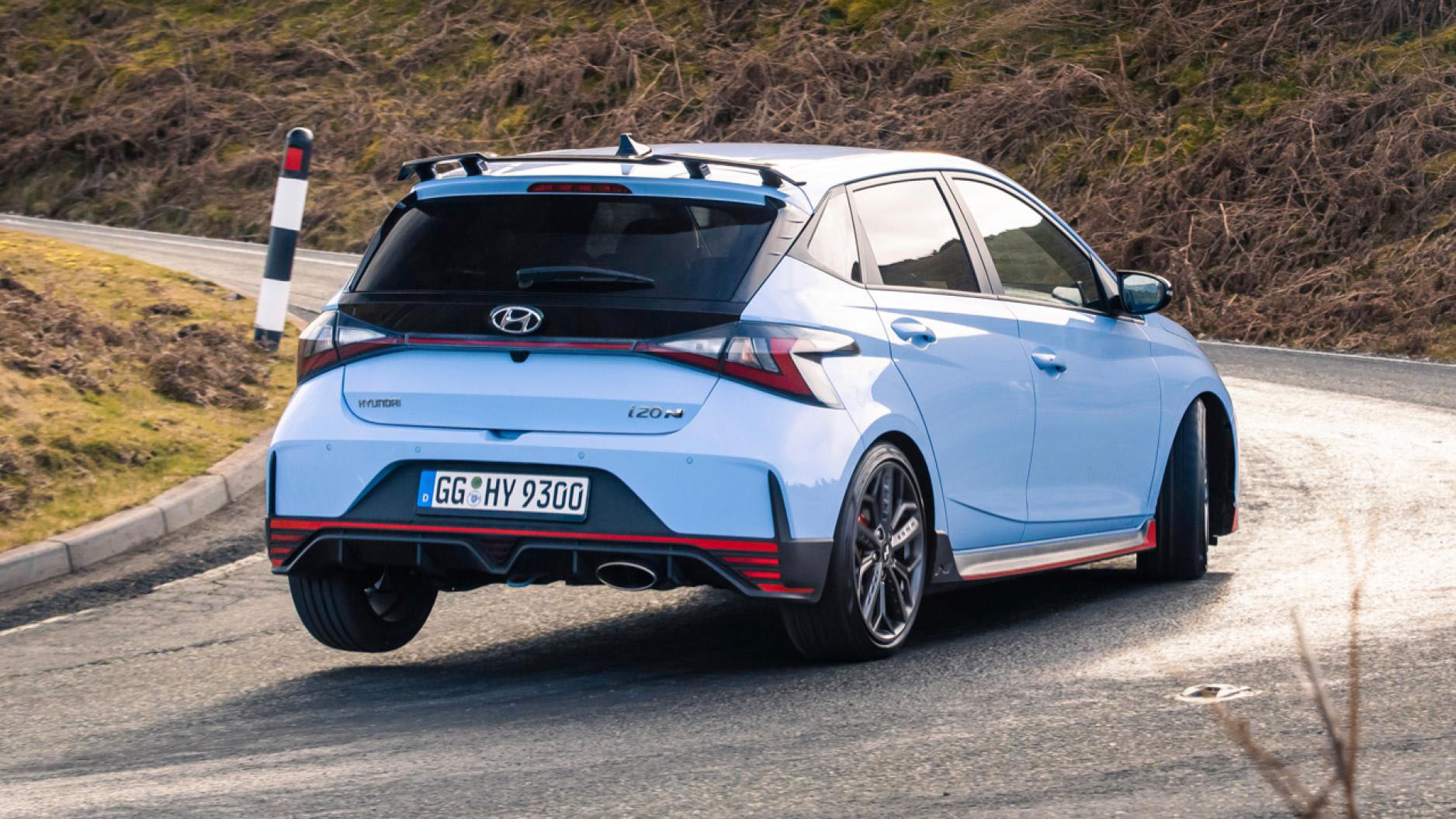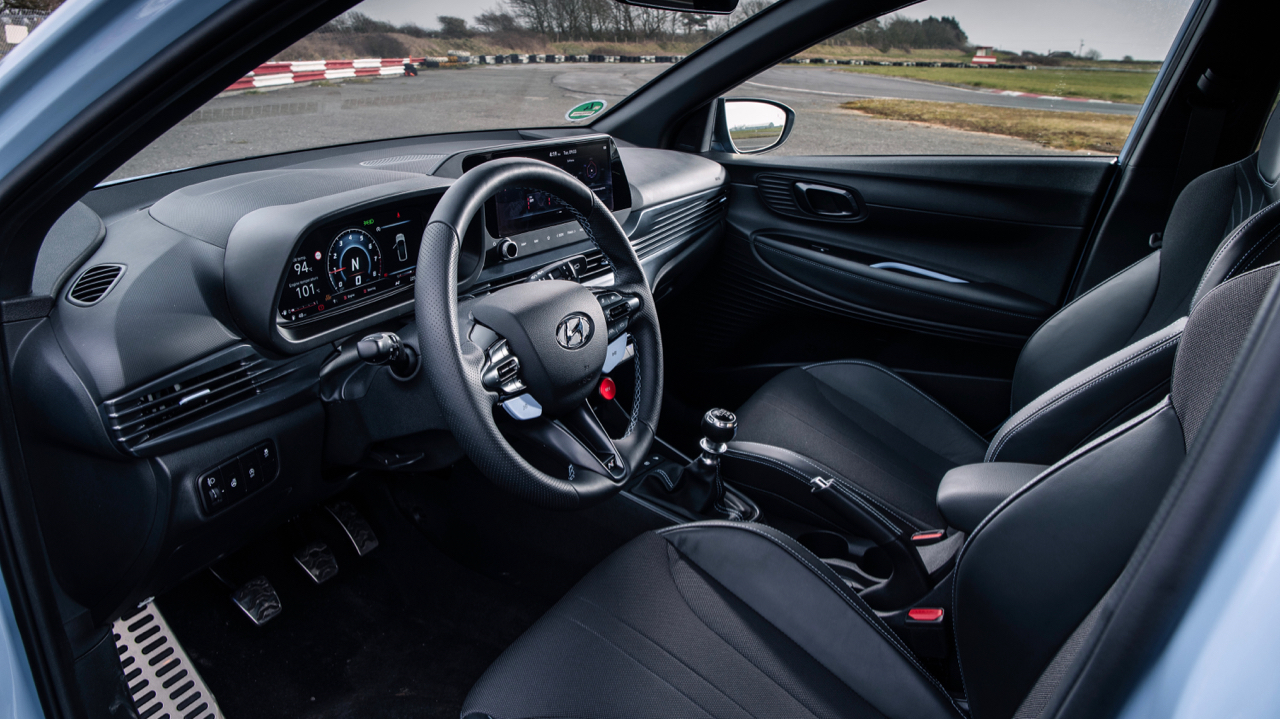
Driving
What is it like to drive?
What do we know about this car’s bigger brother, the i30N? That it has a cracking chassis and a perfectly fine, but rather unmemorable engine. Hyundai clearly believes that to properly establish the N brand the i20N needs to mimic that template.
So let’s get the bad stuff out the way first. The engine does a job, there’s even a switchable exhaust which does deliver a bit of low impact rumble and belch as long as you’re going slow enough to hear it. That gets drowned out as speeds rise, though since it’s also piped in through the speakers, maybe the engineers simply turn it off. Not much wrong with torque delivery, the 1.6-litre delivering 203lb ft in a flat line from 1,750-4,500rpm. It’s healthy enough from 2,000rpm, best between 3,500 and 5,500rpm. After that it starts to run out of puff.
But it’s just not that energetic. It acts like it’s got heavy internals, so there’s not enough energy and snap to it. The blame can be laid on the heavy flywheel. Blip it at a standstill and revs build slowly and take ages to die away. Done for emissions regs no doubt.
Give it the berries through third gear and the i20N does the job but doesn’t seem overly enthusiastic, like it’s towing quite a bit of weight around. But you know it’s not because a) Hyundai tells you it weighs only 1,190kg and around corners that feels right, and b) you’re moving faster than you thought. Faster than 0-60-in-6.7 normally feels. If the Fiesta ST didn’t have such an eager motor, we wouldn’t be making too much of this, but it stops the i20N feeling as responsive in its drivetrain as it does in its chassis. Sweet ‘n’ satisfying six-speed manual shift though, and the brakes are very impressive – they stay firm underfoot and stop the car very well indeed. Gets a bit light at the back if the road is rough or you really stamp on them.
With the Fiesta it’s the way it tips itself into corners that’s so enjoyable. It has a bit of roll, but feels light and agile, playful and mobile. The i20N is more serious-minded. More rigid suspension, tighter body control, tauter feel through its controls. Very i30N. But possibly even better than that is this feels like it was intended to be a hot hatch from the word go, not modified once the vanilla model had been rolled out. It’s very together in everything it does. It corners flat, grips hard, but will lift an inside rear wheel if you really bung it in. On a bumpy Welsh B-road it’s a great giggle around curves. Not a great deal of steering feel, but decent weight, and you get the communication through the chassis and suspension.
It’s coming out of corners that the i20N is most notable. That differential is aggressive and the traction it delivers, impressive. However, it does corrupt the steering, which wriggles in your hands as the diff juggles torque to each wheel. If the surface is rough, you’ll have a bit of wrestle with it. It’s fun, but I’m not sure the i20N needs it. In the Fiesta it makes sense because there’s more roll which unweights the inside tyre and makes it more likely to spin up, so the diff keeps that under control.
But it's churlish to complain. Even if it doesn’t work flawlessly, the diff adds some welcome driver engagement, a sense you’ve got a proper driver’s car on your hands, and it wants to show you what it’s capable of. Like Toyota’s GR Yaris it’s tautly suspended and quick to recover its composure. The damping is impressive – when you’re driving hard.
The rest of the time it’s a jiggly little car, even more so than the Fiesta. The ride around town is stiff, passengers will notice. The dampers aren’t adaptive, so no matter what mode you put the other systems in, the ride quality doesn’t change. But at least you have stuff to play with: a pair of configurable N buttons on the steering wheel, adjusting the engine, stability control, steering, exhaust and rev matching, each through four different levels (Eco, Normal, Sport and Sport+). Thought rev matching was either on or off? So did we. So too does Hyundai since the lesser two modes don’t quite achieve perfect rev matching as you downshift, while both Sport modes do it indistinguishably well.
What we have here is an eager beaver of a hot hatch. Not quite as dynamically talented as the 4WD Toyota GR Yaris, or as playful and flamboyant as Ford’s Fiesta ST, but this is a junior hot hatch that takes itself seriously and does a more than convincing job of tearing a B-road to pieces. Scuttles round corners quickly, but never feels particularly deft or light doing so. Small, but packs a punch.
Featured

Trending this week
- Car Review
BMW iX3





